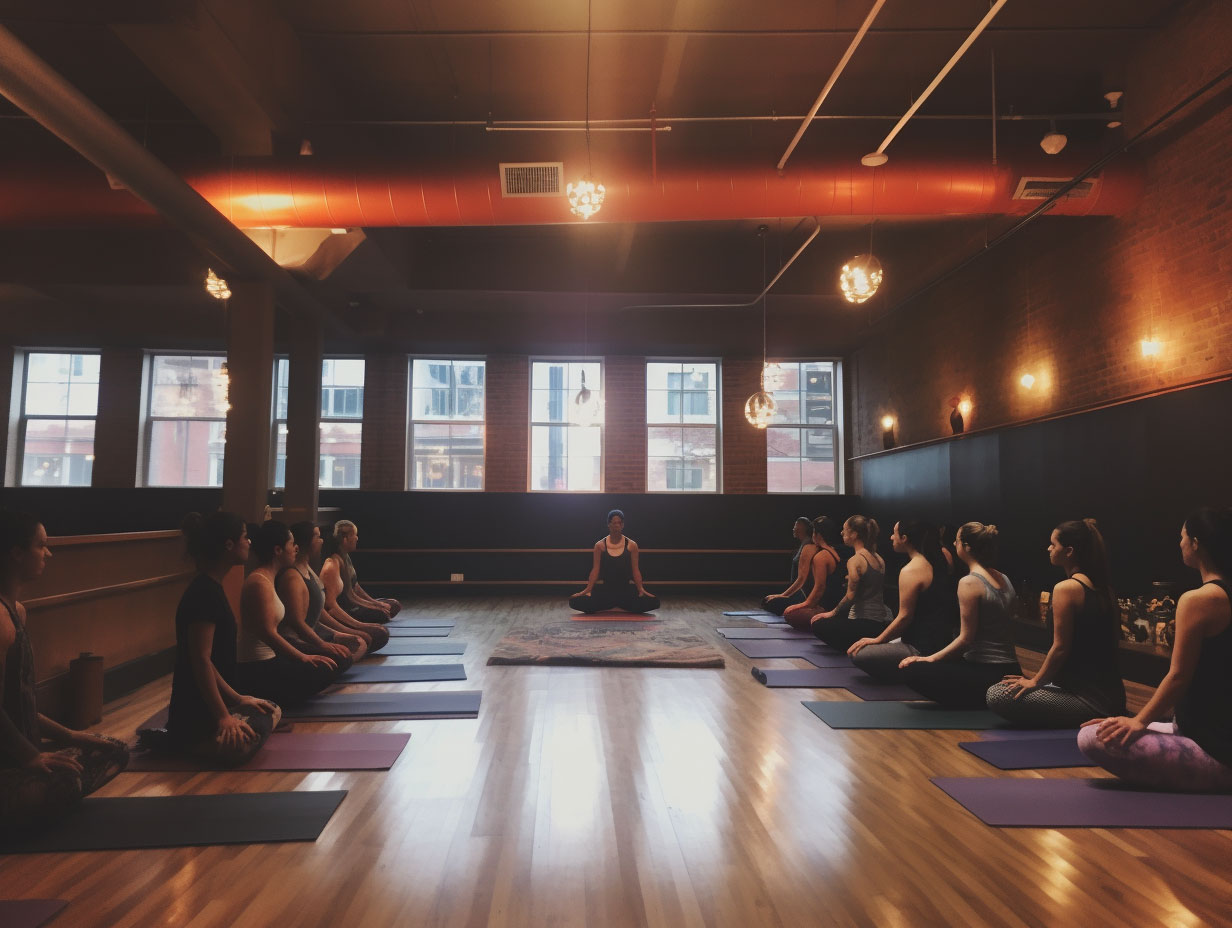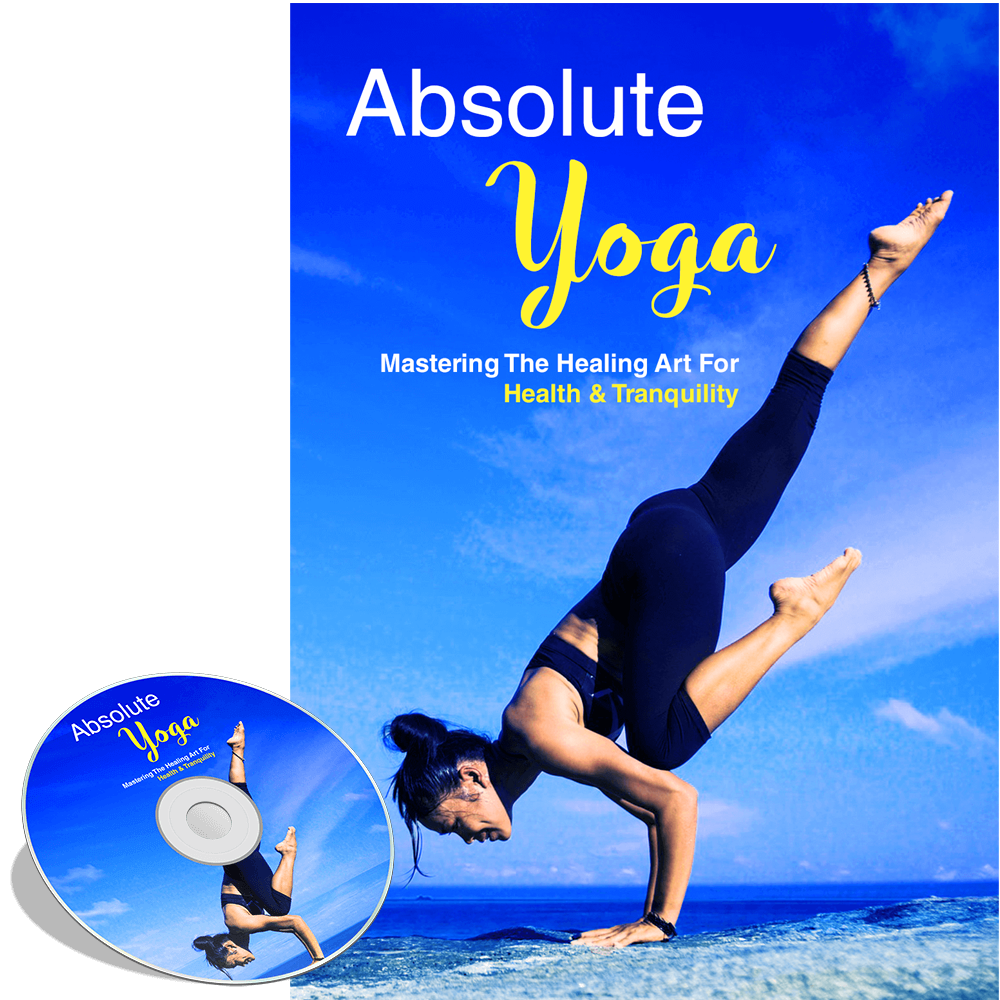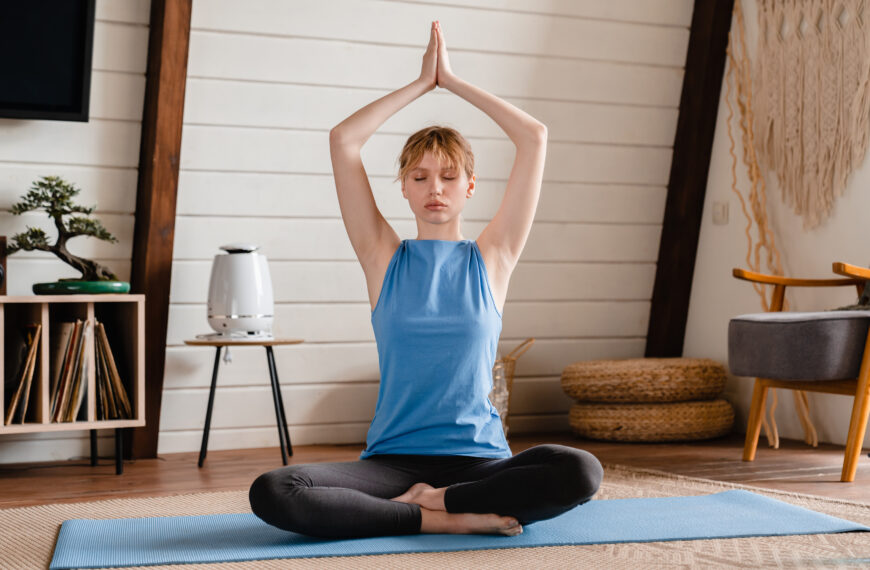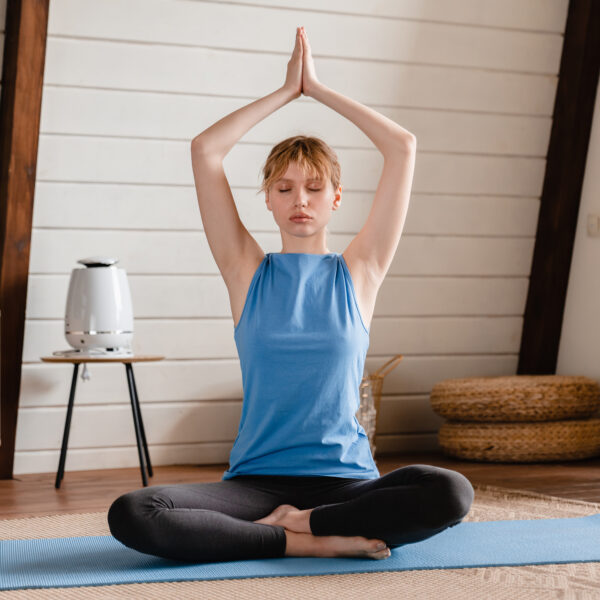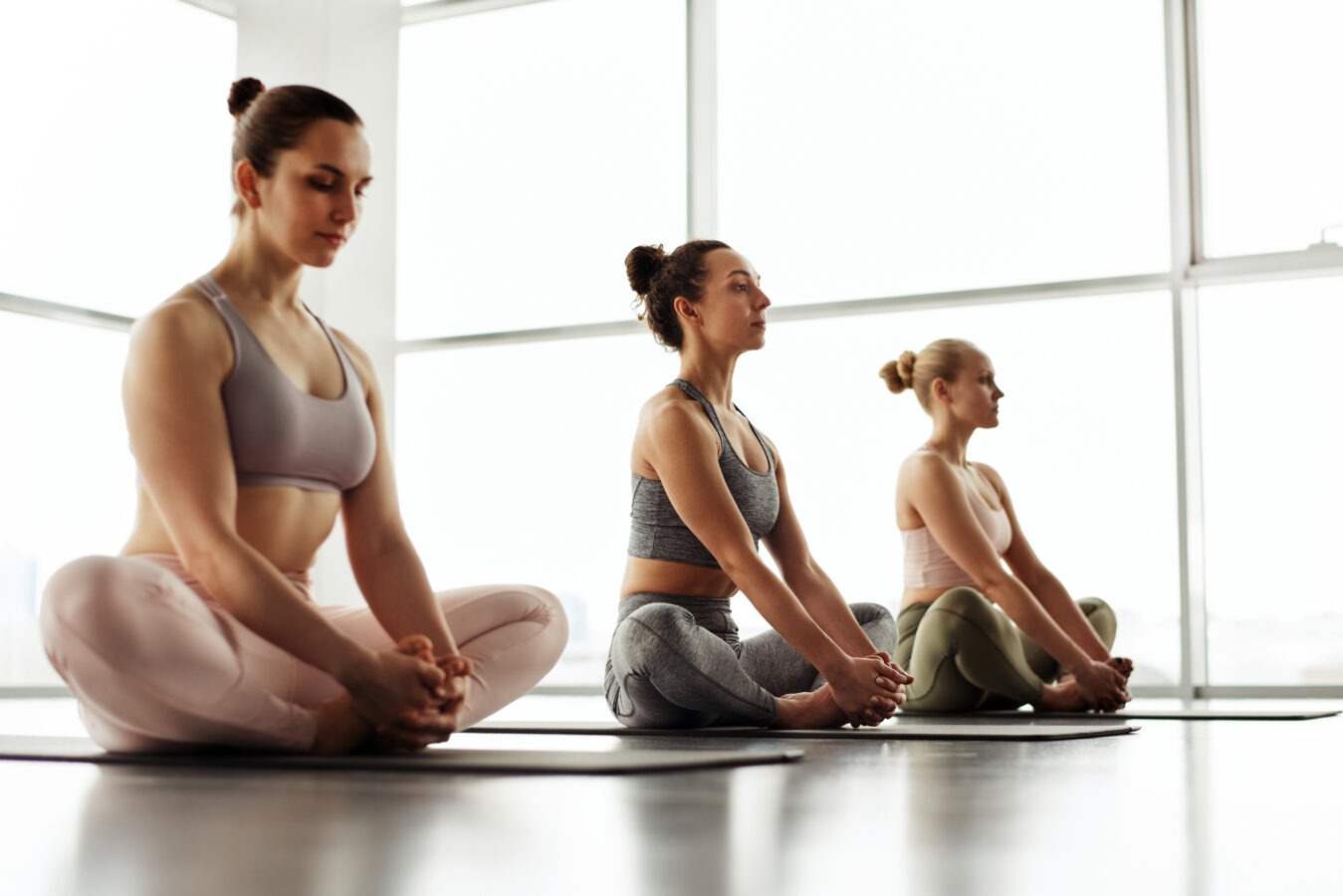The History and Origins of Hot Yoga
Hot yoga has become increasingly popular recently, with studios popping up worldwide. But what exactly is hot yoga, and where did it come from? This article will delve into the history and origins of this unique form of yoga.
The creator of hot yoga, Bikram Choudhury, was born in Calcutta, India in 1946. He began practicing yoga at a young age and was trained by Bishnu Ghosh, the younger brother of Paramahansa Yogananda, known for bringing yoga to the West. Choudhury was a skilled practitioner and won the National India Yoga Championship three times in his youth.
In the 1970s, Choudhury moved to the United States and opened his first yoga studio in Beverly Hills, California. He quickly gained a following among celebrities and athletes, and his style of yoga became known as Bikram yoga. Choudhury trademarked his sequence of 26 postures and two breathing exercises, still used in hot yoga classes today.
The heated room in hot yoga serves several purposes. Firstly, it allows for a deeper stretch as the heat warms up the muscles and makes them more pliable. This can help to prevent injuries and increase flexibility. Secondly, heat is said to help with detoxification as it causes the body to sweat profusely, releasing toxins. Lastly, the heat can also provide a cardiovascular workout, as the heart rate increases in response to the high temperature.
Hot yoga has its roots in traditional Hatha yoga, which focuses on physical postures and breathing techniques. However, Choudhury’s sequence of 26 postures is unique to hot yoga and is not found in any other form. The series is designed to work every part of the body, from head to toe, and is said to provide a full-body workout.
Despite its popularity, hot yoga has faced criticism and controversy. Choudhury has been accused of sexual harassment and misconduct by several women, leading to numerous lawsuits and the closure of many Bikram yoga studios. In addition, some experts have raised concerns about the safety of practicing yoga in such high temperatures, especially for those with certain health conditions.
Despite these controversies, hot yoga attracts a large following, with many people swearing for its physical and mental benefits. The intense heat and challenging postures can test psychological and physical strength, and many practitioners report feeling a sense of accomplishment and improved mental clarity after a hot yoga class.
In recent years, variations of hot yoga have emerged, such as power yoga and vinyasa flow, which also incorporate heat into the practice. However, these styles do not follow Choudhury’s sequence of 26 postures and are not considered true hot yoga.
In conclusion, hot yoga has a rich history and has evolved from traditional Hatha yoga to become a popular form of exercise and meditation. While it may not suit everyone, those practicing hot yoga swear by its physical and mental benefits. Whether you are a seasoned yogi or a beginner, hot yoga is worth trying for a unique and challenging experience.
The Benefits of Practicing Hot Yoga
One of the main benefits of hot yoga is its ability to improve flexibility. The heat in the room allows for deeper stretching and loosening of muscles, making it easier to achieve more advanced poses. This is especially beneficial for those who struggle with tight muscles or have limited flexibility. With regular practice, hot yoga can help increase the range of motion and improve overall flexibility.
In addition to flexibility, hot yoga also positively impacts strength and endurance. The heat in the room increases heart rate and blood flow, which, in turn, helps to build strength and improve cardiovascular health. The challenging poses and longer holds in hot yoga also build muscle and improve endurance. This makes it an excellent workout for those looking to improve their physical fitness.
Aside from the physical benefits, hot yoga also positively impacts mental health. The heat and intensity of the practice can be a form of meditation, allowing practitioners to focus on their breath and be present in the moment. This can help reduce stress and anxiety and promote relaxation and mindfulness. The combination of physical and mental benefits makes hot yoga great for those looking to improve their overall well-being.
Another benefit of hot yoga is its ability to detoxify the body. The heat in the room causes the body to sweat, which helps to flush out toxins and impurities. This can lead to clearer skin, improved digestion, and a more robust immune system. The deep breathing techniques in hot yoga also aid in detoxification by increasing oxygen flow and stimulating the lymphatic system.
Hot yoga is also a great way to burn calories and lose weight. The heat in the room increases metabolism, allowing the body to burn more calories during the practice. The challenging poses and longer holds also contribute to building lean muscle mass, which can help increase metabolism and burn more calories even after the procedure. This makes hot yoga an excellent option for those seeking to lose or maintain a healthy weight.
Furthermore, hot yoga can also improve balance and coordination. The heat and intensity of the practice require a solid mind-body connection, which can help improve balance and coordination. This is especially beneficial for older adults at risk for falls or injuries due to decreased balance and coordination.
Lastly, hot yoga can also positively impact overall mood and energy levels. Combining physical activity, deep breathing, and mindfulness can help boost endorphins and serotonin levels, improving mood and increasing energy. This can be especially beneficial for those who struggle with depression or low energy levels.
Understanding the Difference Between Hot Yoga and Traditional Yoga

Hot yoga involves performing a series of 26 poses and two breathing exercises in a room heated to approximately 105 degrees Fahrenheit with 40% humidity. The heat is meant to mimic the climate of India, where yoga originated. The sequence of poses is designed to work every part of the body, from head to toe, and is typically performed in a specific order to maximize the benefits.
One of the main differences between hot and traditional yoga is the room’s temperature. Traditional yoga is typically practiced at room temperature or slightly warmer, while hot yoga occurs in a heated room. The heat in hot yoga is said to help loosen muscles and joints, allowing for a deeper stretch and increased flexibility. It also promotes sweating, which is believed to help rid the body of toxins.
Another critical difference between hot and traditional yoga is the intensity of the practice. Hot yoga is often described as a more vigorous and challenging form due to the combination of heat and the specific sequence of poses. The heat can make the practice feel more physically demanding, and the poses are held more extended than in traditional yoga. This can be physically and mentally challenging, making hot yoga popular for those seeking a more intense workout.
In addition to the physical benefits, hot yoga is also said to have mental and emotional benefits. The practice’s heat and intensity can help quiet the mind and promote a sense of relaxation and focus. Many people also find that the heat helps to release tension and stress from the body, leaving them feeling rejuvenated and refreshed after a hot yoga session.
While hot yoga may seem intimidating to some, it is essential to note that it can be modified to suit individual needs and abilities. The heat and intensity can be adjusted, and modifications can be made to the poses to accommodate injuries or limitations. Listening to your body and taking breaks as needed during a hot yoga class is always recommended.
On the other hand, traditional yoga focuses more on the mind-body connection and the spiritual aspects of the practice. It typically involves a slower pace and a variety of poses rather than a set sequence. Traditional yoga also incorporates breathing techniques and meditation, which are not typically a part of hot yoga.
Tips for Beginners: How to Prepare for a Hot Yoga Class
Hot yoga, also known as Bikram yoga, has gained popularity recently due to its intense and challenging nature. This form of yoga is practiced in a heated room, typically around 95-105 degrees Fahrenheit, with a humidity level of 40%. The heat and humidity help the body stretch and detoxify, making it a popular choice for those seeking a more intense workout. However, practicing yoga in a hot room can be intimidating for beginners. Here are some tips to help you prepare for your first hot yoga class.
First and foremost, it is essential to consult with your doctor before starting any new exercise routine, especially if you have any pre-existing medical conditions. Hot yoga can be physically demanding and may not be suitable for everyone. It is always better to be safe than sorry, so get a green light from your doctor before attending a hot yoga class.
Once you have the go-ahead from your doctor, it is essential to hydrate appropriately before your hot yoga class. As mentioned, the room is heated to a high temperature, and you will sweat a lot. Drinking plenty of water throughout the day leading up to your class is recommended to ensure your body is well-hydrated. Avoid drinking too much water right before class, as it may cause discomfort during the practice.
Dressing appropriately is another important tip for preparing for a hot yoga class. The heat and humidity in the room can be intense, so it is best to wear light and breathable clothing. Avoid wearing heavy or tight-fitting clothes as they may restrict your movement and make you uncomfortable. It is also recommended to bring a towel to place on your mat to absorb sweat and prevent slipping.
In addition to dressing appropriately, coming to class on an empty stomach is also essential. Hot yoga can be physically demanding, and practicing on a full stomach can cause discomfort and may even lead to nausea. You have a light meal or snack at least 2-3 hours before your class is recommended. If you are hungry, you can have a small snack, such as a piece of fruit, 30 minutes before class.
Listening to your body and taking breaks when needed is essential as with any exercise. Hot yoga can be challenging, and it is okay to take a break and rest in a child’s pose or savasana if you feel overwhelmed. Communicating with your instructor is essential if you feel lightheaded or dizzy. They can offer modifications or suggest taking a break to cool down.
Lastly, a positive mindset and openness to the experience are essential. Hot yoga can be physically and mentally challenging, but it is also an excellent opportunity to push yourself and try something new. Remember to focus on your breath and listen to your body. That is fine if you need to take a break or modify a pose. The most important thing is to listen to your body and do what feels right for you.
Hot Yoga vs. Other Forms of Exercise: Which is Right for You?
Hot yoga has become increasingly popular in recent years, with many people flocking to studios to experience this unique form of exercise. But what exactly is hot yoga, and how does it compare to other forms of exercise? In this article, we will explore the world of hot yoga and discuss its benefits and differences from different workouts.
First and foremost, hot yoga is a type of yoga that is practiced in a heated room, typically ranging from 90-105 degrees Fahrenheit. The heat is meant to mimic the climate of India, where yoga originated, and is believed to help loosen muscles and increase flexibility. Bikram yoga is the most common form of hot yoga, consisting of 26 poses and two breathing exercises in a heated room.
One of the main benefits of hot yoga is its ability to increase flexibility. The heat allows for deeper stretching and can help release muscle tension. This is especially beneficial for those who struggle with tight muscles or chronic pain. The heat can also help improve circulation and detoxify the body through sweating.
Another benefit of hot yoga is its ability to provide a cardiovascular workout. The heat and intensity of the poses can elevate the heart rate, making it a great form of exercise for those looking to improve their cardiovascular health. This is especially beneficial for those who may not enjoy traditional forms of cardio, such as running or cycling.
Hot yoga also offers a mental and emotional component that sets it apart from other forms of exercise. The heat and intensity of the practice can challenge the mind and help to build mental resilience. Many practitioners also report feeling a sense of calm and relaxation after a hot yoga session, making it a tremendous stress-relieving activity.
However, hot yoga may not be suitable for everyone. The high temperatures and intensity of the practice can be too much for some individuals, especially those with certain health conditions. It is essential to consult with a doctor before starting any new exercise routine and to listen to your body during the practice to avoid overexertion.
Now, let’s compare hot yoga to other forms of exercise. One of the main differences between hot yoga and other workouts is the heat. While some may find the heat invigorating and beneficial, others may find it uncomfortable and prefer a more relaxed environment for their activities. Additionally, the heat in hot yoga can make it more challenging to maintain proper form and alignment, which is crucial for preventing injuries.
Another difference is the focus on mindfulness and breath in hot yoga. Unlike other forms of exercise, hot yoga strongly emphasizes connecting the mind and body through breathwork. This can significantly reduce stress and improve overall well-being, but it may not be everyone’s cup of tea.
Hot yoga also differs from other forms of exercise in intensity. While it can provide a great cardiovascular workout, it may not be as intense as other forms of cardio, such as running or high-intensity interval training. Depending on an individual’s fitness goals and preferences, this may be a pro or a con.
In conclusion, hot yoga is a unique form of exercise that offers a variety of physical and mental benefits. Its high temperatures and focus on mindfulness set it apart from other forms of exercise, making it an excellent option for those looking for a challenging and holistic workout. However, it may not be suitable for everyone, and it is essential to consult a doctor before starting any new exercise routine. Ultimately, the best form of exercise is one that you enjoy and can stick to consistently.

